Lefse 101
Norwegian flatbread production in Alpine, Wyoming
One interesting thing about living in Wyoming is that there are many people here from exotic places, like the Midwest. We don’t have all that many midwesterners moving into Pennsylvania, but they sure do like these mountain ranges and the fishing and hunting opportunities.
One friend from Minnesota is Kim Nyquist. She and her husband Mark have lived part of the year in Alpine and the Jackson environs for years, purchasing a home in Alpine 12 years ago, next door to where Rose and Stephen built. Kim and Mark live in Minneapolis but spend several months a year in Wyoming with friends and family.
Last year, during one of our many conversations about food, she mentioned lefse, the iconic Norwegian flatbread that is very popular in the Midwest. When I told her I had never had it, she volunteered to bring her lefse griddle to Wyoming for a demo.
Kim doesn’t mess around. She is a high-powered do-er who commandeers a room and runs the show. Why wouldn’t she? Kim is a former Olympic speedskater and well-accustomed to going the distance. Kim called all the shots during our lefse-making session, and her visiting sister-in-law, Linda, and I followed her instructions.
I had heard of lefse before, from the Hammer brothers, Larry and Scott, helpers during our old catering days. Their family hailed from Minnesota, and when they spoke of lefse at the holidays, their eyes glazed over with a faraway look. It’s an iconic treat that symbolizes family, connection, and happy times. Plus, it is delicious.
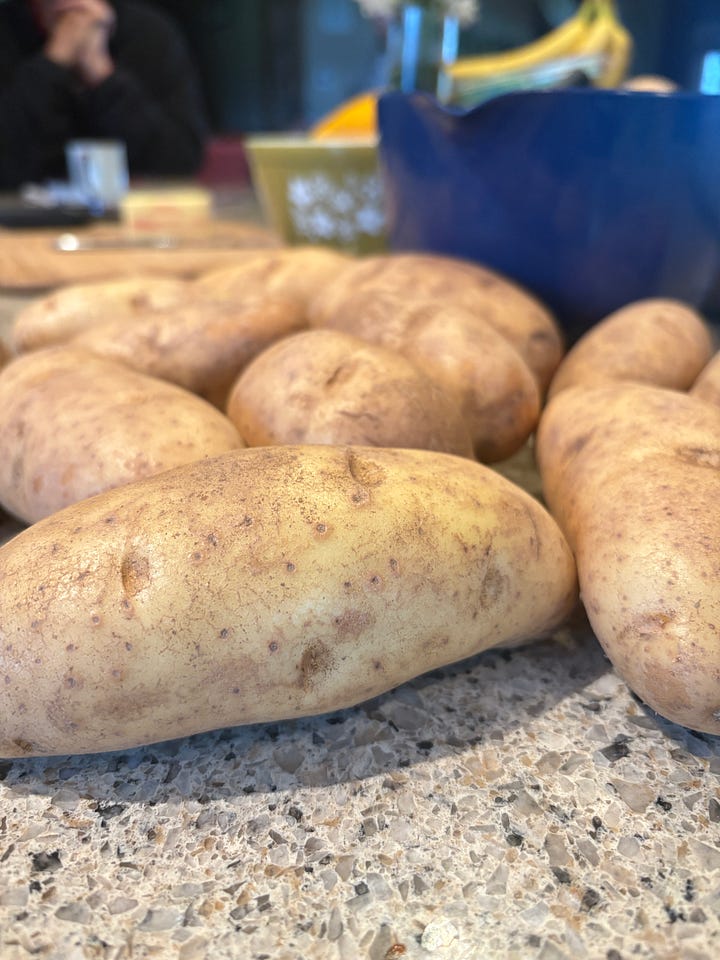
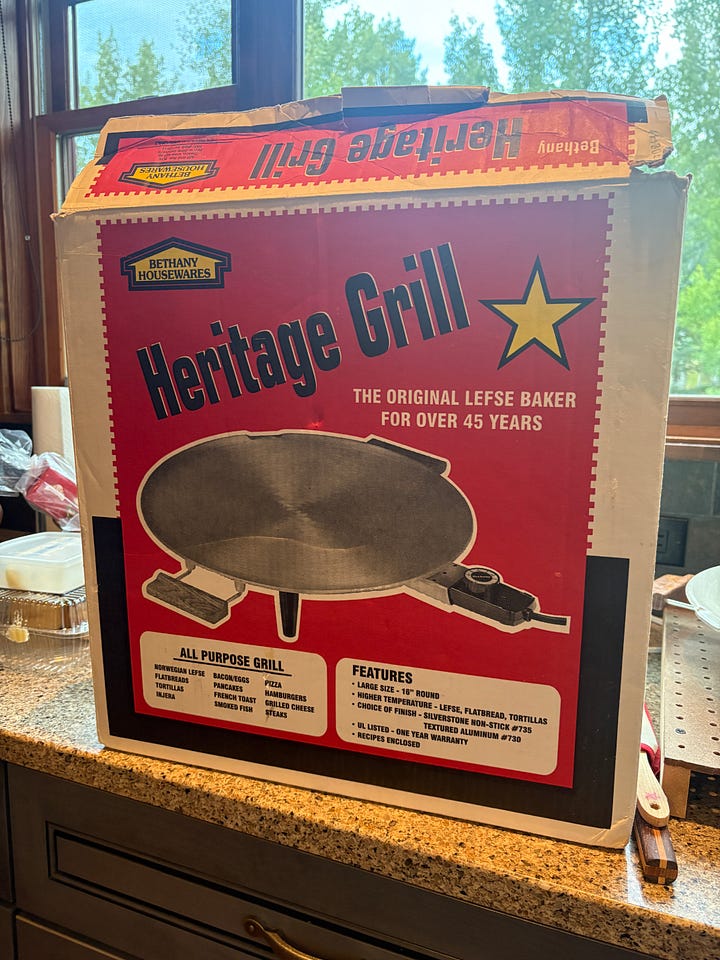
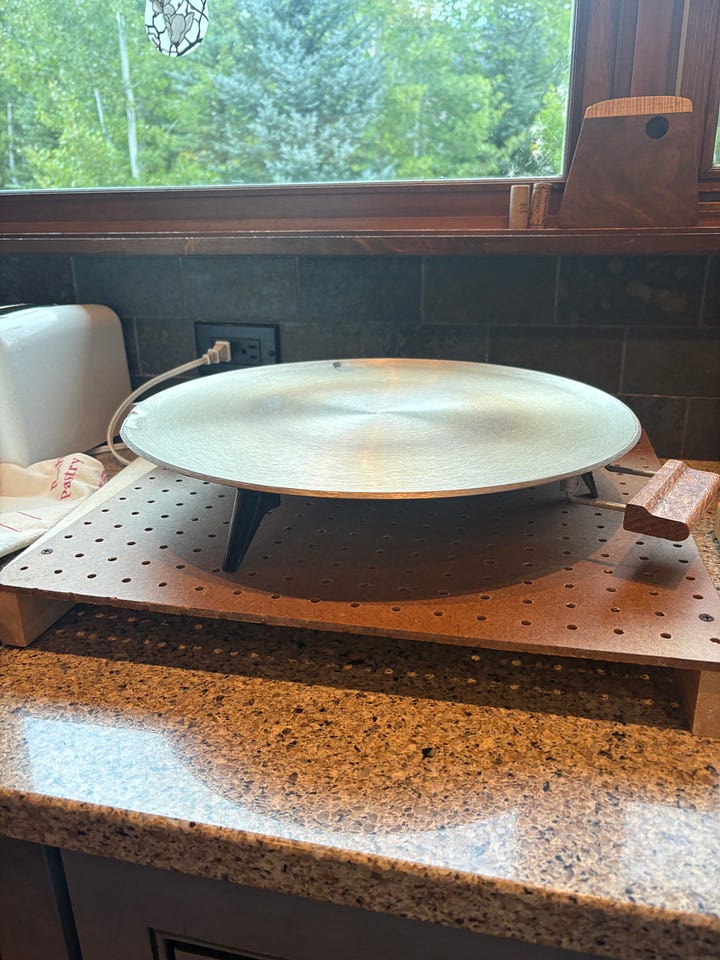
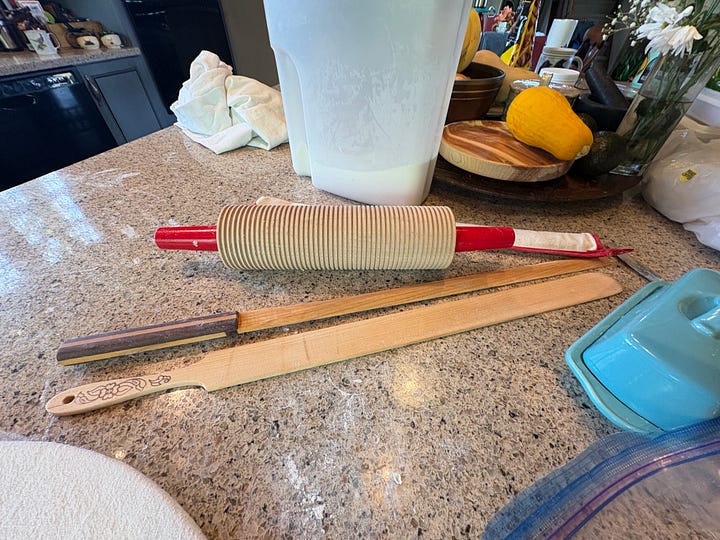
I was very impressed at the amount of specialized equipment required to make our 30-count batch of lefse. There was a potato ricer, borrowed from a friend in Alpine, plus a grill, a board to roll it out on, multiple muslin cloths for the board, a special grooved rolling pin with its own cloth sleeve, and two long, slender paddles for lifting and turning the lefse. Kim had it all.
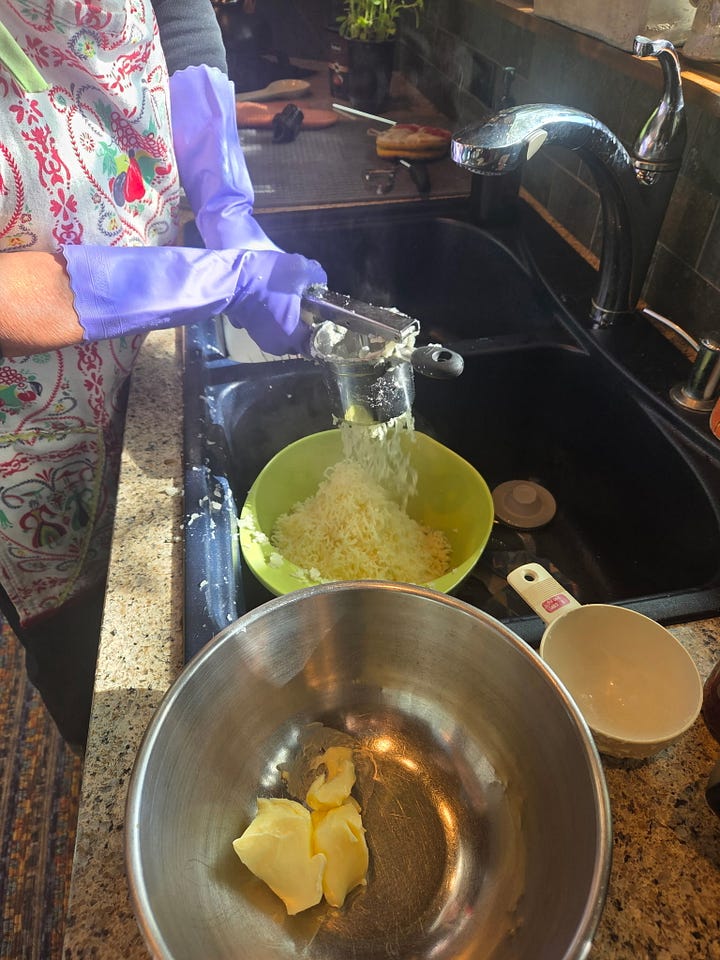
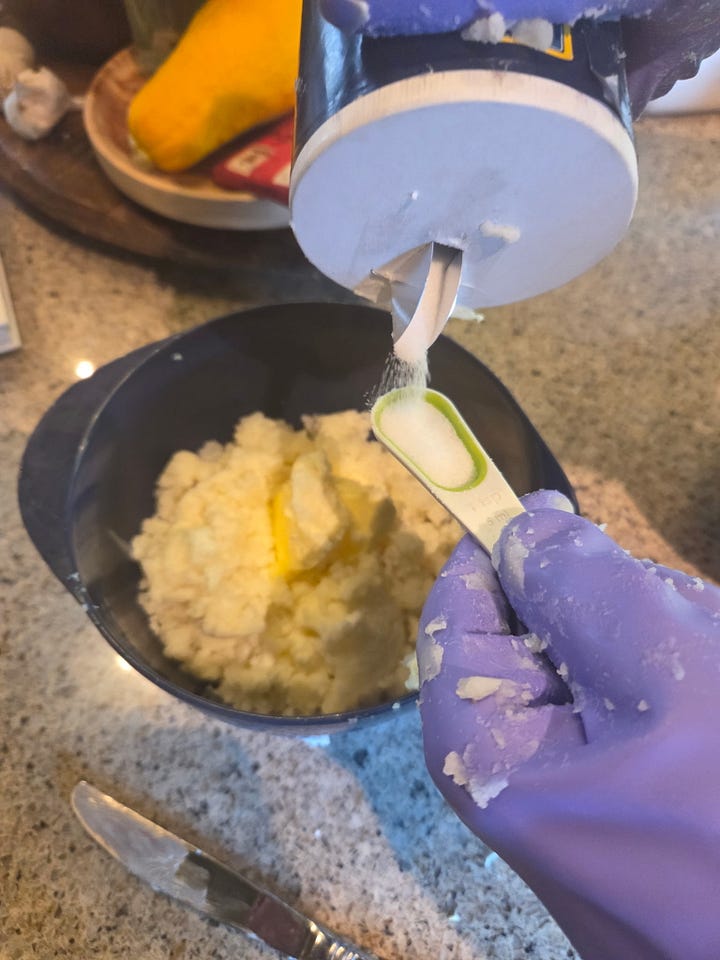
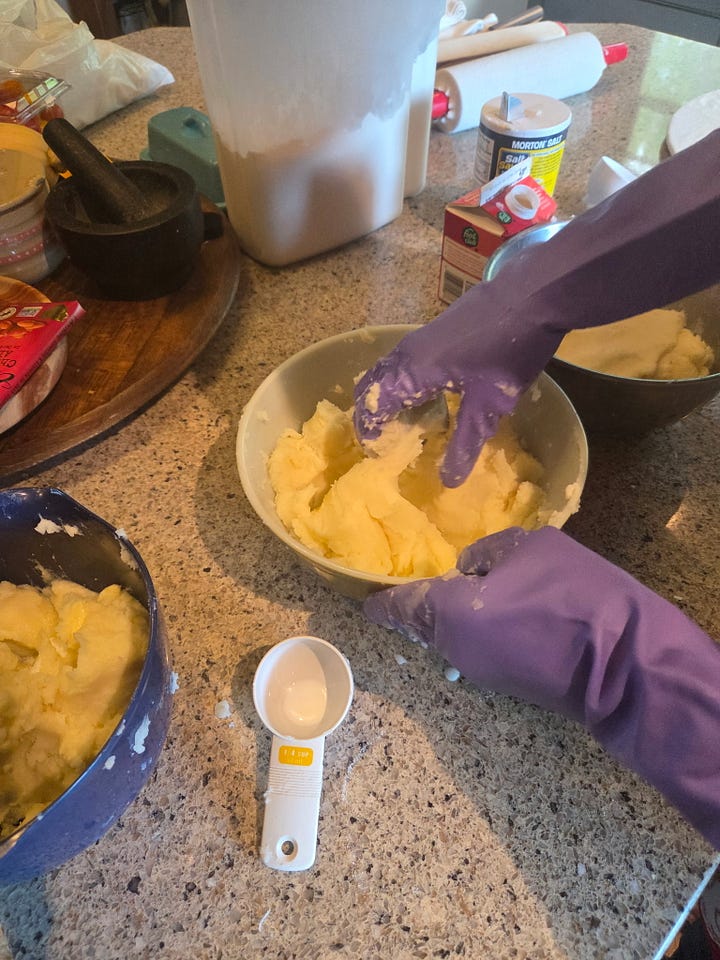
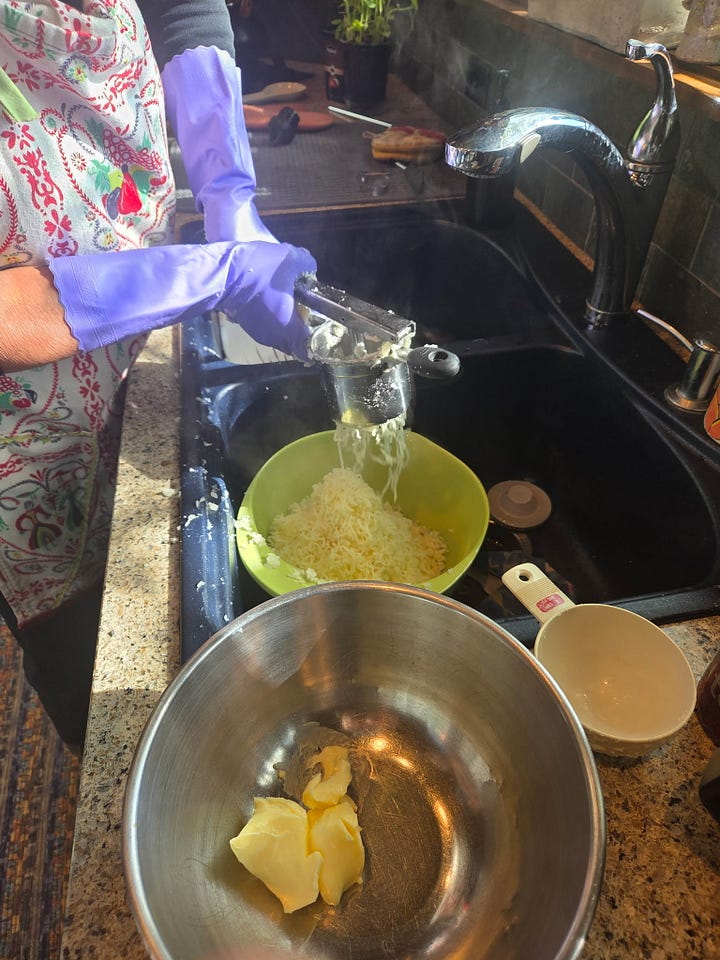
Mark’s sister Linda is from South Dakota, where they grew up with lefse at the holidays. Linda, who named our escapade “Lefse 101”, manages to make lefse with a minimum of specialized equipment. Still, she admitted that she may have to up her game after using the interesting tools that facilitated the process.

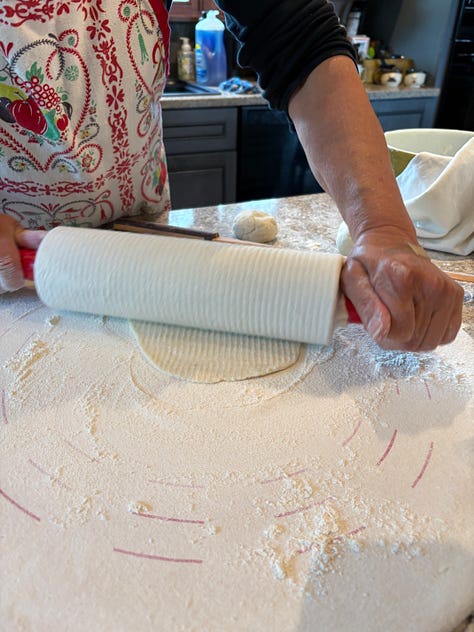
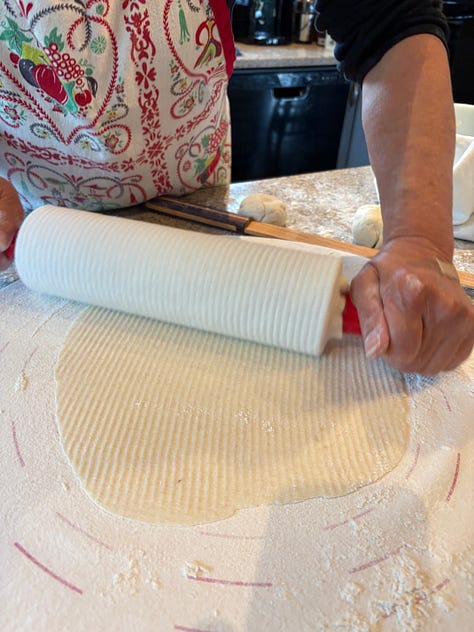
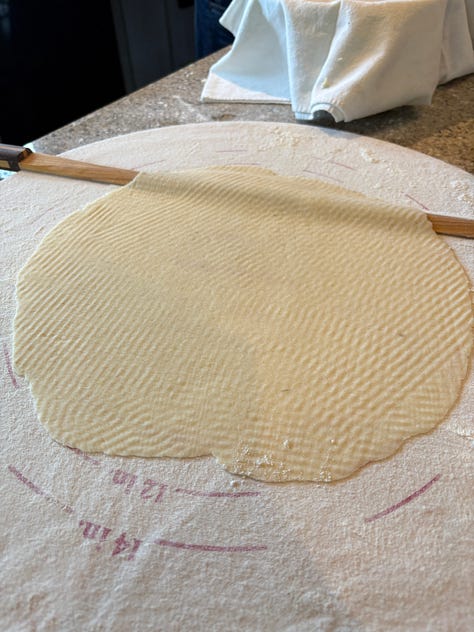
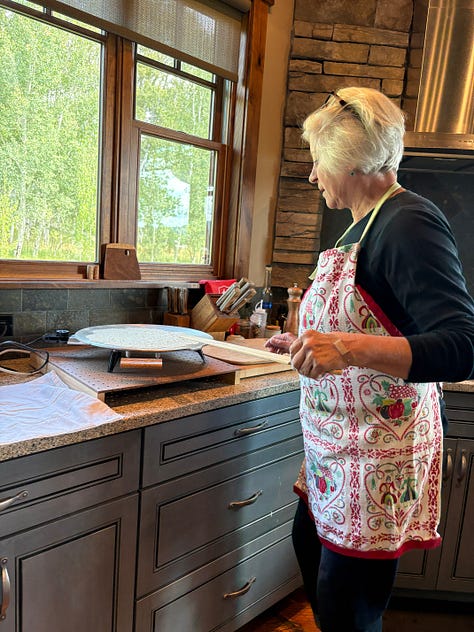
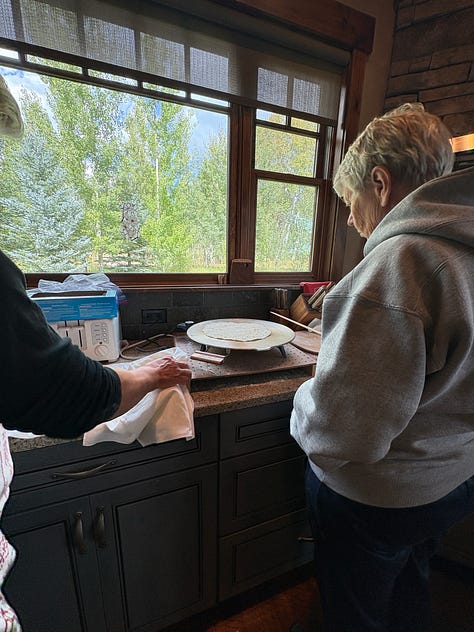
We started with about 5 pounds of Russet potatoes and peeled them. We were on the border of Wyoming-Idaho at Kim and Mark’s house, and our potatoes were fresh and snapped when you cut them. After peeling and boiling, the potatoes were riced and then mixed with butter, flour, sugar, and cream once the mixture had cooled. Kim shaped the mass into small balls, about the size of a Temple orange, which is smaller than a regular orange and larger than a tangerine.
There’s a LOT of flour involved in the process, not just in the mix, but also to keep the board dry so the lefse doesn’t stick. The special rolling pin was grooved so that the dough looked like corduroy when it was rolled out. The long wooden paddles proved invaluable for transferring the dough to the grill and for checking it while it was cooking. Linda and I worked into a rhythm, me rolling, she grilling, Kim everywhere, overseeing. We were all a bit floury after our session, which took about 4 hours, and involved several sampling breaks to make sure it was perfect. And it was, spread with butter. Sugar is also a favored topping, with or without cinnamon—there was discussion about that.


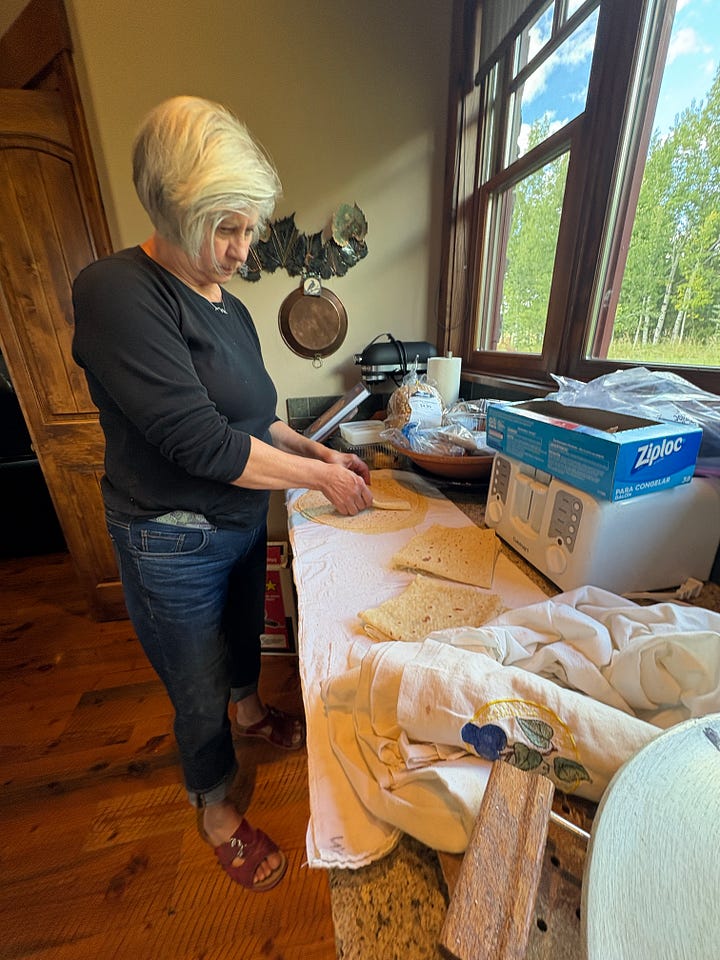
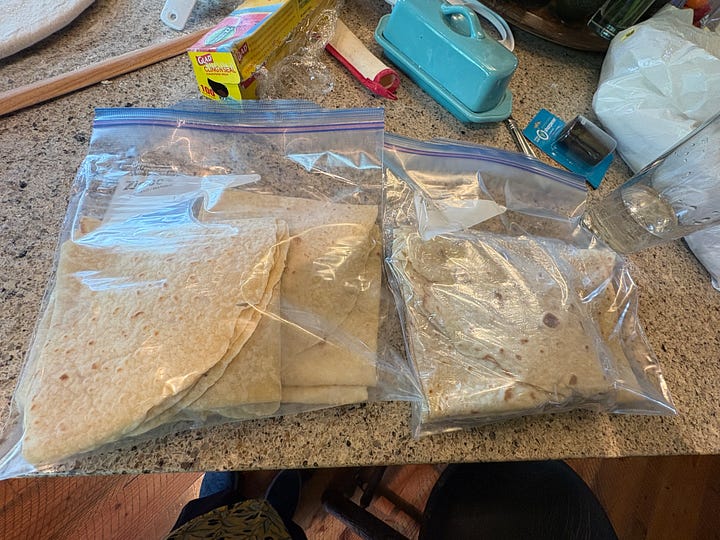
The word “lefse” is Norwegian, derived from the Old Norse word “hleifr”, meaning "loaf" or "slice of bread". While it is not something I’m likely to mix up on my own, I now understand and appreciate the origins. It is not a food that Vikings brought to America, because potatoes didn’t reach Norway until the middle of the 1700s, introduced by traders, with cultivation promoted by priests to enhance food security. Norwegians previously made lefse with wheat flour, and it was more like a dry cracker that could be stored for many months and dampened with water to eat. The addition of potatoes made it much more substantial. Norwegian immigrants embraced the potato variety of lefse in the New World, especially in the Midwest, and their descendants look forward to the specialty at holiday times.
Which is around the corner. Thanks for the lesson, Kim!
Kim Nyquist’s Directions for making Norwegian LEFSE
4 cups riced potatoes
¼ cup cream
4 Tbsp butter, room temp
1 tsp salt
2 tsp sugar or 3 Tbsp powdered sugar for fluffier Lefse
Peel Russet potatoes, cut up, and boil. Don’t overcook them, or they take in too much water. Strain
In each of three bowls, put all the above ingredients. Rice potatoes when hot. Add 4 cups of riced potatoes to each bowl.
Mix well. I put on rubber gloves and mix with my hands.
Cover each bowl with a flour sack towel and let cool to room temp. Approx 2-3 hours?
When ready to make Lefse, one bowl at a time, add
1 1/2 cups of flour. Mix in flour with your hands and form into
Balls about 2” round? You can see how big or small you want your Lefse to be.
Roll out and grill at 450 degrees. Only flip once.
Let cool before folding and wrapping.



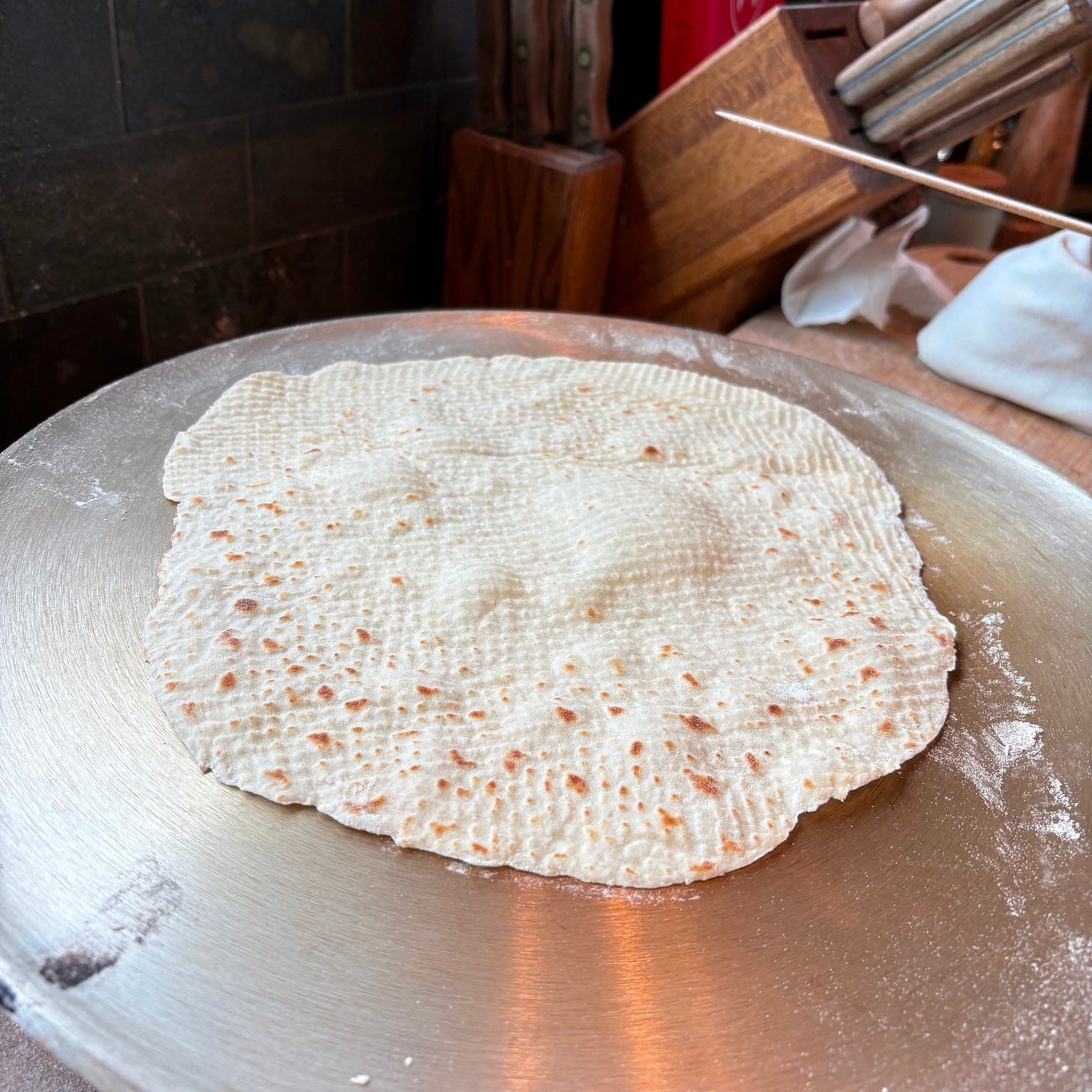
It was delicious! So tender and delicate.
It was delicious! So tender and delicate.